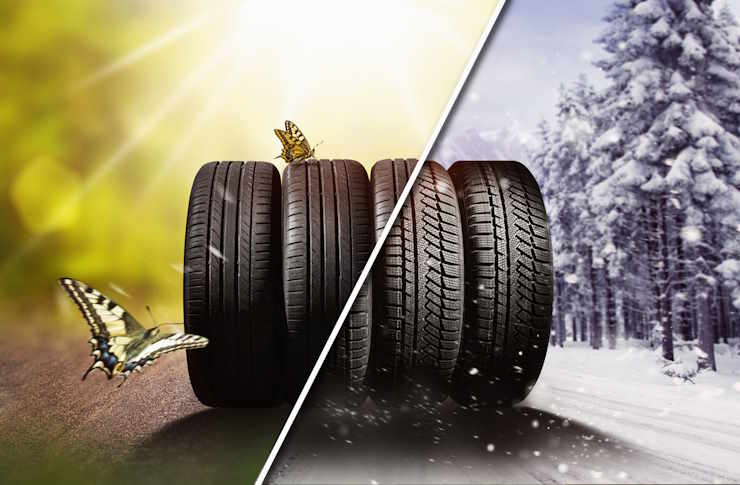All Season Tires
All season tires represent a versatile solution for drivers seeking reliable performance across various weather conditions and seasons. These tires are designed to provide adequate traction, handling, and durability throughout the year, eliminating the need for seasonal tire changes for many drivers. While specialized tires excel in extreme conditions, all season options offer a practical compromise that balances performance requirements for typical driving scenarios across spring, summer, fall, and winter.

What Are All Season Tires?
All season tires are engineered to deliver acceptable performance in multiple weather conditions and temperatures. Unlike specialized summer or winter tires, these versatile options feature tread patterns and rubber compounds designed to handle both warm and cool temperatures, light snow, rain, and dry conditions. The tread designs typically incorporate elements from both summer tires (for handling and wet traction) and winter tires (for snow and ice capability), though with compromises in extreme performance areas.
Most all season tires feature symmetrical or asymmetrical tread patterns with moderate groove depths, multiple sipes (small slits in the tread blocks that create additional gripping edges), and rubber compounds formulated to remain flexible in moderately cold temperatures while maintaining durability in warmer conditions. This construction allows them to adapt to seasonal changes without requiring drivers to switch tires throughout the year.
Benefits of Tires for All Season Use
The primary advantage of all season tires lies in their convenience and cost-effectiveness. By eliminating the need for two sets of specialized seasonal tires, drivers can save on both purchase costs and the labor associated with biannual tire changes. This makes them particularly appealing for drivers in regions with mild winters or those who don’t frequently encounter extreme weather conditions.
All season tires also offer consistent handling characteristics throughout the year, which means drivers don’t need to adjust to different performance characteristics when switching between summer and winter tires. Modern all season designs have significantly improved in terms of tread life, with many options offering 50,000 to 80,000 miles of service when properly maintained. Additionally, these tires typically produce less road noise than winter tires while providing better wet and light snow traction than summer performance tires.
When All Season Tires May Not Be Sufficient
Despite their versatility, all season tires do have limitations. In regions that experience severe winter conditions with heavy snowfall, ice accumulation, or prolonged periods below 45°F (7°C), dedicated winter tires provide significantly better traction and safety. The rubber compounds in all season tires begin to harden at lower temperatures, reducing grip even on dry pavement.
Similarly, drivers seeking maximum performance in warm weather conditions may find all season tires less responsive than summer or performance tires. The compromises that make all season tires functional year-round also prevent them from matching the cornering grip, braking performance, and handling precision of tires specifically designed for warm weather use. Performance enthusiasts and drivers of sports cars may prefer dedicated seasonal tires to maximize their vehicle’s capabilities during specific seasons.
Understanding All Season Tire Ratings and Specifications
When shopping for All Season Tires online, understanding tire ratings and specifications becomes crucial for making an informed decision. All season tires carry several important markings that indicate their capabilities and limitations:
The M+S (Mud and Snow) marking indicates basic all season functionality, while the more stringent three-peak mountain snowflake symbol designates tires that meet specific snow traction performance requirements. UTQG (Uniform Tire Quality Grading) ratings provide information about a tire’s treadwear expectancy, temperature resistance, and traction capabilities.
Speed ratings, indicated by letters like H (130 mph), V (149 mph), or T (118 mph), denote the maximum safe operating speed. Load ratings specify how much weight each tire can safely support. Most passenger vehicle all season tires feature ratings appropriate for family vehicles, though performance-oriented all season tires may offer higher speed ratings at the expense of tread life or comfort.
Popular All Season Tire Options and Pricing
The market offers numerous all season tire options across various performance categories and price points. While budget offerings provide basic functionality, premium tires often incorporate advanced technologies for improved wet traction, reduced road noise, and longer tread life.
| Tire Model | Performance Category | Typical Price Range (per tire) | Key Features |
|---|---|---|---|
| Michelin CrossClimate2 | Premium All Season | $170-$250 | Excellent wet traction, snow performance, 60,000-mile warranty |
| Continental TrueContact Tour | Grand Touring All Season | $130-$190 | Low rolling resistance, 80,000-mile warranty, comfortable ride |
| Goodyear Assurance WeatherReady | Premium All Season | $140-$220 | Three-peak mountain snowflake rating, 60,000-mile warranty |
| General AltiMAX RT43 | Standard Touring All Season | $85-$140 | Good value, 75,000-mile warranty, balanced performance |
| Cooper CS5 Grand Touring | Grand Touring All Season | $100-$160 | Wear Square indicators, 80,000-mile warranty, quiet ride |
Prices, rates, or cost estimates mentioned in this article are based on the latest available information but may change over time. Independent research is advised before making financial decisions.
Maintaining All Season Tires for Maximum Performance and Longevity
Proper maintenance significantly extends the life and performance of all season tires. Regular rotation every 5,000-7,000 miles ensures even tread wear across all four tires. Maintaining correct inflation pressure—checked monthly and before long trips—improves fuel economy, handling, and tread life while reducing the risk of blowouts.
Alignment should be checked annually or whenever the vehicle pulls to one side or experiences irregular steering wheel vibration. Seasonal inspections for damage, foreign objects, and tread depth are essential, with replacement recommended when tread depth reaches 4/32” for all season tires (though legal minimum is typically 2/32”). Additionally, checking tire age is important, as rubber compounds degrade over time regardless of tread depth—most manufacturers recommend replacement after 6-10 years even if tread appears adequate.
All season tires offer a practical solution for drivers seeking year-round performance without the hassle of seasonal tire changes. By understanding their capabilities, limitations, and maintenance requirements, drivers can make informed decisions about whether these versatile options meet their specific driving needs and regional weather conditions.




